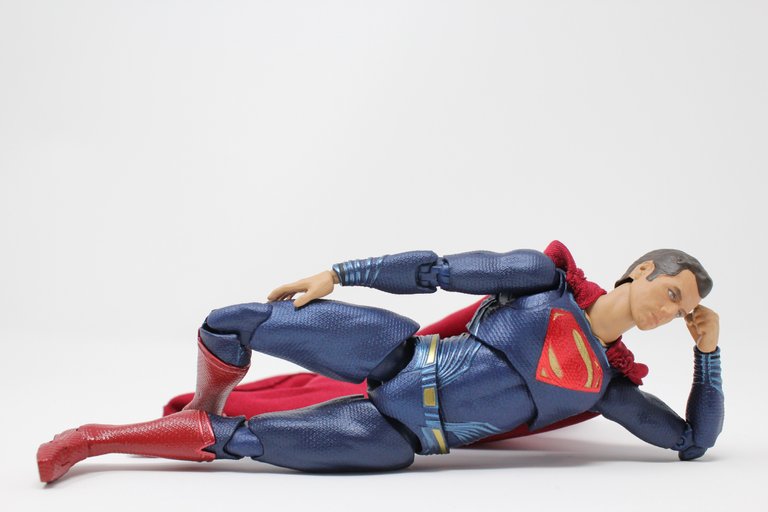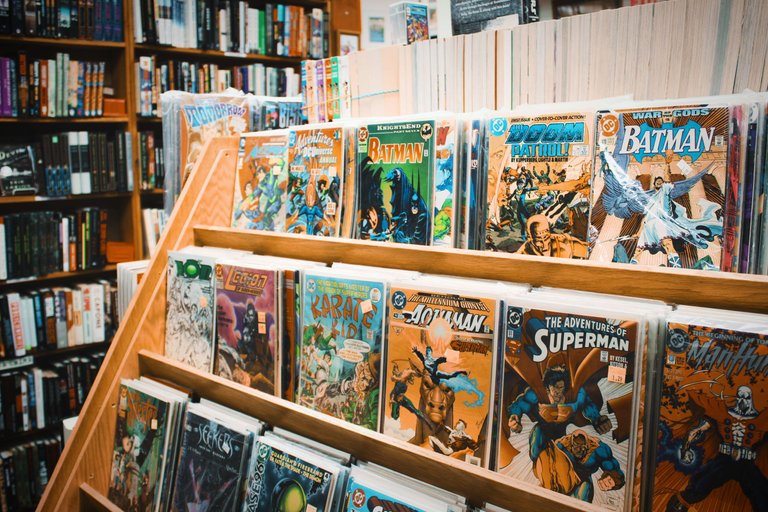In the late 1930s, boys and girls flocked to their local newspaper stands and bought comic books featuring a new type of crime-fighter called a superhero.
For ten cents (which was more money than it is today) children enjoyed reading adventures of their most favorite man with uncanny physical powers called "Superman".

Almost a year later, two other superheroes appeared on the stands - Batman, Robin and Wonder Woman.
(Batman and Robin had no superpowers, but he fought crime with enhanced acrobatic skills and strength.)
Other superheroes included the Flash, Green Lantern, Hawkman and additional members that made up the "Justice Society of America".
Shortly thereafter, DC Comics created other super-powered crime fighters who fought super-powered villains.
As soon as they hit the stands, children bought and read the comics the same day they came out.
Not only did they read them, but they also traded, talked about them with their friends and even dressed like their heroes.
Comics provided a way for children to have fun, especially when the joyless Depression Era robbed people of their wealth.
By the time the 1940s came around, mothers were either throwing out comic books or gave them up to support the war effort of World War II.
It appeared that the "Golden Age" of comic books had been lost.
In the 1960s, comics made a huge comeback with new superhero characters created by Marvel Comics owner Stan Lee.
Spiderman, the Hulk, Ironman, Thor, and groups such as the Fantastic Four, the Avengers, and the X-Men changed the comic book world forever.
Marvel created most of the new superheroes fighting new supervillains during what later became known as the "Silver Age" of comic books, which lasted approximately from 1956 to 1969.
Stan Lee's company capitalized on the industry; not only were children reading comics, but also adults in their 20s and 30s.
Thanks to Marvel's success, the older DC comics which were still in print became popular again. Superheroes were here to stay.
In the early 1970s, comic book lovers primarily collected new as well as old DC and Marvel.
Collectors realized that the older comics needed to be protected from the elements by placing them in clear Mylar bags and backing them with acid-free boards.
Also, they could be organized in special storage boxes that could fit one hundred or more comics which allowed curious browsers to easily flip through them.
Collectors searched for older collections.
Although many of the early editions became scarce, some would emerge from old and rare collections that financially influenced future collectors who bought them.
First editions and first appearances became big targets for true collectors. The most sought after were and still are the first appearances of two biggest name superheroes - Superman (Action Comics #1) and Batman (Detective Comics #27).
The values of older superhero comics rose to many times their original purchase price, which even included some earlier Marvels from the early 1960s.
Today, comic book prices have skyrocketed due to the rising popularity of numerous superhero tv shows, cartoons, and movies.
Of course, DC and Marvel are the most popular comic book companies with assets worth astronomical amounts of money.
Comic book collecting has become a cult phenomenon. Each year, hundreds of thousands of fans attend conventions.
Comic book shops have grown steadily in popularity as sanctuaries where collectors can talk about comics and browse boxes of collections.
That being said, there are more collectors than ever before. Not only do young adults collect, but older adults do too.
So many older comics, especially Golden Age DC as well as many Silver Age Marvel, can be bought at popular auctions, such as eBay, or Heritage for a few hundred dollars to several million dollars, depending on condition and rarity. (I remember purchasing a No. 5 issue of the "Fantastic Four" in 1981 for $10.
Today, it is worth between $400 to $600. The sad part is I sold it right after I bought it. Also, in 1997, I purchased an Avengers #1 for $280. Now it is worth roughly $2500.)
Collecting has become so serious that finding the ones in the highest condition and lowest mintage are the two most important marks for investing in comic books.

Some will not read the comic book at all because handling comic books might damage them and diminish their value.
These same collectors will shell out good money to get them hermetically sealed in hard plastic and graded by companies such as CGC, CBCS, or PGX.
Superhero comic book collecting has changed so much since the late 1930s in which many children enjoyed reading adventures of DC characters.
In the 1960s more adults began reading and collecting comics thanks to new heroes and villains created by Marvel, who now compete with DC.
Today buying comics is a cult and a major industry as children and adults of every generation are collecting comics.
Now, collecting new and old comics can be expensive, but since many people are still actively buying them, we should see them increasing in value.
Article Source: https://EzineArticles.com/expert/Harrington_A_Lackey/1594833
Hi! I am a robot. I just upvoted you! I found similar content that readers might be interested in:
https://ezinearticles.com/?Buying-Superhero-Comics-Over-the-Last-80-Years&id=10152573